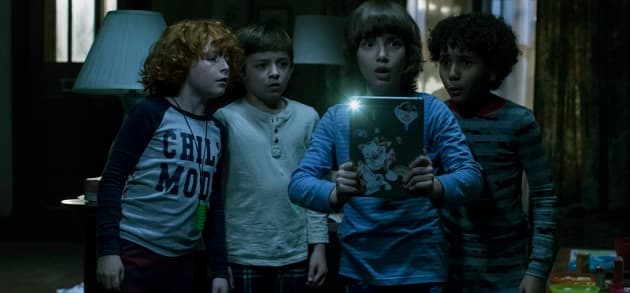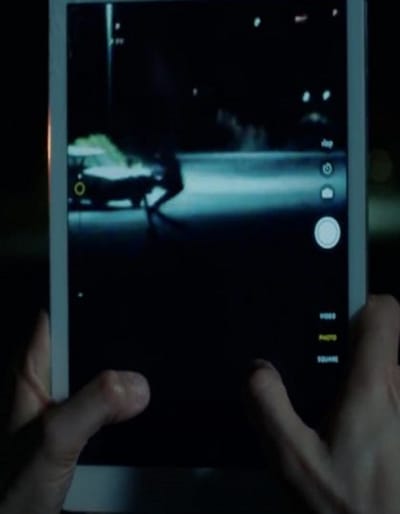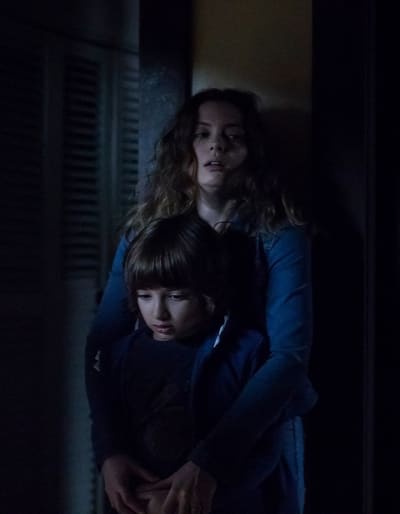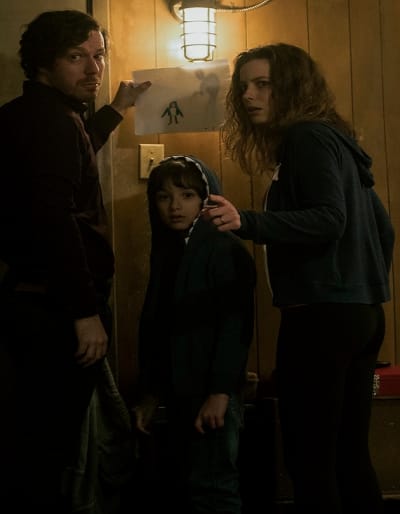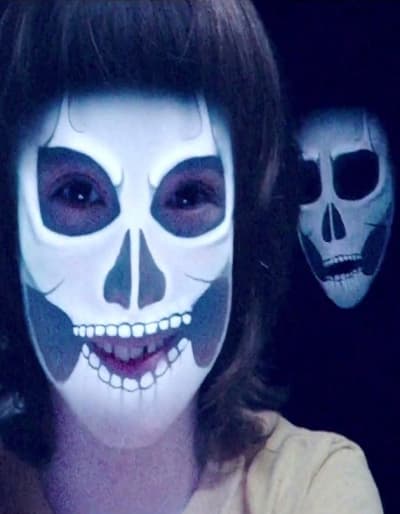It’s that time of year, so it is hardly a surprise that one of the releases for this final weekend in October – in theaters and On Demand — is the horror flick Come Play.
It stunningly uses the autistic child at the heart of this story and how his lack of communication abilities can be used as a thrilling plot movement in a horror film.
Writer-director Jacob Chase brings his cult hit short film, Larry, to the big screen and in the process makes quite the statement about motherhood and how people who are different are viewed in our society while also scaring the you-know-what out of us.
Come Play finds Gillian Jacobs (Community) as Sarah, a mother to an elementary school aged boy who is on the spectrum. Oliver cannot talk and uses various tech devices to convey his thoughts to his teachers and family. As the film commences, he really doesn’t have any friends.
In fact, he gets picked on by a trio of boys, led by Byron (Winslow Fegley) who he used to play with when they were younger.
At the urging of Oliver’s speech therapist, Sarah decides to invite Byron and two other boys over for a sleepover. She used to be good friends with Byron’s mother, but life has gotten in the way. Wonder how that sleepover is going to go?
Chase doesn’t even show much of the play date, he cuts right to the chase. By chase, here it means horror. Oliver can’t sleep, so he gets out his tablet and roams about the house, but he isn’t alone.
There’s a presence here, named Larry, as well as his three “friends” who jet downstairs when they find him gone from the bedroom.
Whether it’s Oliver’s phone (which Byron threw into the woods in an earlier scene) or the iPad his father Marty (John Gallagher Jr.) found in lost and found at the parking lot where he works, there’s a “children’s” story that automatically turns on when the machine powers up.
It’s a tale about a beast named Larry who has a penchant for taking children.
Larry is lonely and sad. Larry wants to be Oliver’s friend. It wants Oliver and will do anything to succeed.
Where, who or even what Larry is is continually in question and not revealed until the bitter end — a rarity in horror films as too many try to tease the shock and awe about the mystery as we move along.
That doesn’t happen with Come Play because we have absolutely no idea and no inclination as to how this story will play out.
For example, back to the sleepover. Byron and the two other boys are playing keep away with Oliver’s iPad until he gets it back, looks through its camera and there is Larry by Byron, pushing the table into him as it presses him against the wall.
Yeah, screams ensue and all the moms immediately come to pick up their shocked-to-the-core boys in the middle of the night.
Chase smartly only teases the physical incarnation of Larry bit by bit as the film progresses, and his horrific form gets exponentially more terrifying as he is revealed.
Creating unique and terrifying creatures in the horror genre has gotten more difficult as the years pass. The audience is profoundly astute, and they don’t take to half-efforts on any aspect of their beloved milieu.
Creature Designer Ehsan Bigloo has manifested the most unique of horrific sights with Larry. His fingers and toes are the stuff of nightmares and horrifically distinctive. Larry’s movements may seem slow, but they are deliberate and dangerous to anyone who gets in his way.
Complimenting the jolt of witnessing Larry is compounded by pitch-perfect sound effects and sound design masterminded by the SFX team. The crunching crawl of human bones slowly, but deliberately, ever closer adds countless layers to the fear factor.
Larry is a mysterious, enormous, and lonely creature whose hands seek hands to take to the other side of the life-death paradigm.
Jacobs is fantastic. When is she not? More on her in a moment, but we have to start by saluting the young talent of newcomer Azhy Robertson who stars as Oliver. The Plot Against America actor is more than up to the task of portraying an autistic child. It is a thin needle that Robertson had to thread.
Oliver has to be believable within the confines of the story but also to the masses who are living with being on the spectrum or having children on the spectrum as well. The young actor triumphs in the most endearing and powerful of ways.
The young actor’s character is beyond believable and grounded in such a reality that, sadly, too many parents know too well. It is Robertson who sells the scares, as well as the strong emotional tether we have towards this fractured family.
Jacobs can do it all. Her role as the protective, but frustrated, mother is equally endearing and enlightening.
We rarely see parents portrayed on the silver screen with autistic children that manage to express the simultaneous angst and adoration that must accompany every day — that double-sided coin that is comprised of possessing equal parts protective passion and continual exasperation.
Each day is a struggle, but with love each single 24-hour loop is as rewarding as any element in life. The actress captures all of those essences with a panache that is palpable.
Her chemistry with Oliver is the key to the entire film working or not. We have to accept that this mother would do anything for her son, but at the same time, she questions what is real and what is being horrifically imagined.
With her son’s inability to talk, the communicative aspect of a mother-son relationship is filled with brick walls and thus amplied fear.
Still, these two souls, through the actors inhabiting them, deliver some of the most touching parental moments this year onscreen. You just want to give them both a hug.
As Oliver discovers Larry, the desperate-for-a-friend little boy is able to be enticed by this creature that gives him attention, where few do the same.
The separation of his father and mother is not helping (and the experts who work with the boy) with dissecting through all the quiet noise that comes from Oliver as his terrors are slowly overtaking him.
Chase, as director, clearly had a source material that was and is close to his heart.
His short film, Larry, triumphantly expands to a full-length feature without losing a moment of its terror-laden impact. Chase is really just getting started in that realm of longer length filmmaking, and this is a promising effort.
His script is rich emotively in that it plays that mother’s love note like a gospel chorus singing to the tops of the church.
Mama Bear is not to be messed with, and Jacobs’ Sarah is established as a mother who would do anything for her child, especially because of his special needs.
When a monster enters her son’s landscape, look out. Larry messed with the wrong kid.
The screenplay has a decent flow with only a few slightly dragging moments during its 105-minute run. Taking a short film and expanding it to full narrative is no easy challenge. What made the short pop will not necessarily work in the same manner with a full-length narrative.
Yet Chase manages to weave enough plot threads throughout his Come Play that it holds your attention through its thrilling conclusion.
